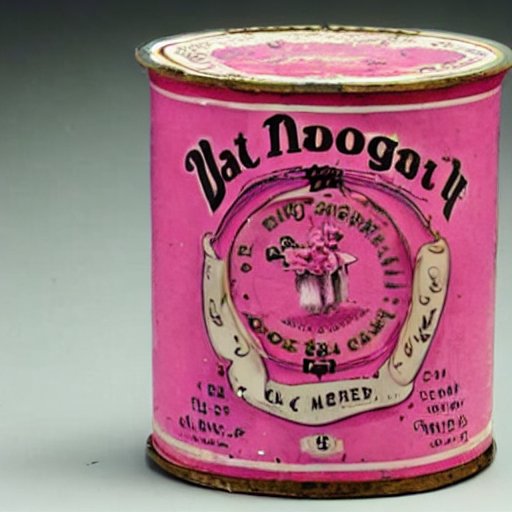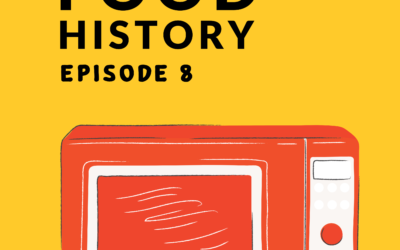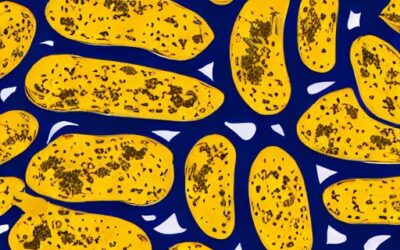Pink margarine & the games of the butter lobby: how big butter tried to smother competition
Imagine living in the State of New Hampshire sometime in at the end of the 19th century. You go out to do some grocery shopping. Money is a little tight this month, so instead of getting butter, you opt for the more inexpensive margarine.
You take your shopping home, cut your bread, and open the lid of the container to find a shiny pink mass. Not exactly what you expected and certainly not something you would like to put on your bread. You suspect that you have got a bad batch, and so you you and ask your neighbor, who confirms that their margarine is pink as well. The news travel across town, wit everybody confirming that their tubs of fatty goodness are, in fact, pink.
Now, imagine no more. This series of events occurred in New Hampshire in 1891.
You might wonder, why would they make margarine pink? Wouldn’t it hurt their sales?
On top of this madness, rumour has it that the heavenly-tasting spread is supposedly mixed with tin cans, arsenic and stray cats. And that it has been linked to cases of clinical insanity.
Are margarine manufacturers running a big April’s fools joke, or what is going on?
As it turned out, someone else was pulling the strings—someone who wasn’t happy to lose profits to a new product category.
The butter lobby.
You can also say the dairy lobby, but this sounds much less dramatic.
Join me for this episode to learn how politicians were buttered up to make margarine selling illegal, how the innocent spread ended up in some dirty smear campaigns, and how the spread changed colors from white to bright pink to how we know it today as buttery yellow.
It’s Butter the French Way
In 1866, French emperor Napoleon III considered that no war could be won without strong and healthy soldiers. As an energy source, the French army relied on nutritious butter, among other things. But butter had the disadvantage of being expensive and turning rancid quickly. This was especially worrisome in a time without cooling facilities.
So that year, the Emperor offered a reward of 100.000 Goldfranc to anyone who could come up with a suitable, cheap replacement. Three years later, the chemist Mège-Mouriès presented the solution: A mixture of beef fat, salt, sulfate of soda, gastric juices of a pig, and a little cream, all heated and mixed into a butter-like substance.
At first, he dubbed his invention “beurre économique”, the cheap butter, but then changed his mind. He renamed the mixture “oleomargarine” from the Latin “oleum”, meaning beef fat, and the Greek “margaron”, meaning pearl, because of its pearly shine. That name was later shortened to “margarine”.
The Mège-Mouriès invention, although had a jelly texture, approximated the most to the original taste, which won him Napoleon’s prize. The product didn’t take off, though. In 1871, Mège-Mouriès sold the patent to a Dutch company called Jurgens, which eventually became part of Unilever and is still one of the leading manufacturers of margarine.
The Dutch realized that if they were hoping to sell their product as a butter substitute successfully, they had to improve the texture and fix the color, as margarine is naturally white. They began to dye it slightly yellow to match the pale yellowish color of butter. And this is how the war between the two began in the United States.
Unlike in Europe, margarine was an immediate hit in the US when it arrived in the 1870s, especially with the poorer segments of the population. To the horror of the American dairy farmers, 37 companies started to produce it within the decade. This new product trend threatened their existing profits.
That called the dairy industry into action. Thanks to its passionate lobbying, they buttered up the politicians to pass the Margarine Act was passed in 1886. It was the first of a series of laws instating heavy taxes on margarine products. In some states, and also in Canada, the spread was banned.
The Beurre Minimum
In New Hampshire, the lobby couldn’t manage to ban margarine. Instead, the state came up with a more colorful idea. In 1891, a law was passed requiring manufacturers to dye their products pink. Anyone who didn’t comply could be fined 100 Dollars (almost 3000 Dollars today) or face two months in jail. And this is how you ended up with that shiny pink mass in your margarine container.
As if the revolting color and the climbing prices were not enough to keep people hooked on butter, the dairy lobby started a smear campaign. Speeches were made to defend “sweet and wholesome butter”, and rumours were spread about how it was produced.
A 1911 edition of the Chicago Tribune pictured factories dropping tin cans, arsenic and stray cats into the margarine mix. Dubious scientific reports hinted that the spread caused cancer or could lead to insanity. This smear campaign seems even more absurd when considering that back then, margarine and butter weren’t all that different. Both contained almost 80% fat from the same dairy animal and 20% water.
After seven years of the pink mass, the Supreme Court of New Hampshire had enough. It struck down the “pink laws” by stating the obvious: “Pink is not the colour of oleomargarine in its natural state”, and the unnatural colour “excites a prejudice up to the point of (…) absolute refusal to purchase the product at any price.” Well, one might argue that this was the only reason why the laws were passed in the first place. Though pink was not obligatory anymore, margarine producers were still not allowed to color their product yellow.
Help for the margarine manufacturers came from an unexpected side: During the Great Depression, which was followed by food rationing in WWII, its popularitybegan to soar. As there was a shortage of animal fats, the producers began to use hydrogenated vegetable oils rather than animal fats for their products. Butter, on the other hand, became extremely rare.
The hiking taxes on margarine were lifted in the 1950s due to the surge in popularity. A few years later, the artificial coloring laws were done away with, and it started to be sold in butter-like shades. For the first time, it was on a level playing field with butter (except not in Wisconsin, where yellow margarine was still banned until 1967).
Nowadays, Americans eat an average of 5.6 pounds of butter yearly, as opposed to 3.5 pounds of margarine. Margarine has recently lost popularity [again] due to health concerns about trans fats and the rising preference for natural, unprocessed foods. The war between the two spreads is not over yet.
Oh, and if you are wondering what became of Hyppolite Mège-Mouriès: He didn’t [really] profit from his invention. Although he won Napoleon’s prize, the poor guy died, well, poor, in 1880.
Lessons for the future of food
The main take-home message from this story is that legislation is not to be underestimated. In our third season episode on promoting alternative proteins, we have covered Amendment 171. This vague Amendment , if applied in Europe, would have had a wide range of implications. It could have prohibited oat milk manufacturers from calling their product “oat >milk<” or even explaining it as a milk substitute. It could have even threatened to sell the products in the same containers as traditional milk products. Oatly made some hilarious campaigns and videos showing how ridiculous it would look to get your non-milk from a spray or can.
Our interview guest Ronja Berthold said that, within her team, there was no consensus on whether the Amendment would go through or not. Fortunately, Amendment 171 didn’t pass. If you want to find out more about this, you can check out episode 3.9. on “Censoring dairy alternatives.”
According to Open Secrets, 12,000 lobbyists in Washington were officially registered to have lobbied actively in 2021. Surprisingly, the actual number is likely way higher.
According to Lobbycontrol, there are an estimated 25,000 lobbyists in Brussels with a year’s budget of 1.5 billion Euros.
With enormous leverage, the food industry is one of the strongest lobbying forces, if not THE most decisive lobby. If you want to dive into animal agriculture’s ties to politics and organizations like the USDA and FDA, check out the book “Meatonomics: How the Rigged Economics of Meat and Dairy Make You Consume Too Much”. It is a fascinating and intense read written by a lawyer who discussed the broken system of subsidies and food propaganda.
New technologies often encounter crossed arms, on the consumer side and possibly even more importantly from competitors. And legislation banning, restricting, or disadvantaging new products is one of the biggest threats to novel foods.
Of course, this is very relevant for cellular agriculture, and corporations like The Good Food Institute work very hard to prevent this.
It comes back to the question: how much are you putting up a fight with the existing industry head-on, and how much are you trying to befriend them?
It reminds me of a report called “Talking Trash” that I mentioned in season 2 on plastic alternatives. The Talking Trash report showcases how big companies like Coco-Cola, PepsiCo, and Danone are acting two-sided. On the front, they declare significant commitments, invest in projects to reduce plastic trash, and join alliances for sustainability. Behind closed doors, they lobby against legislation that would tax or limit plastic use because it would endanger their profits.
That’s not because the whole organization is against change; in the end, it’s just a pool of people. A few effective altruists in the sustainability department of a corporate or a few revolutionaries in the corporate venture arm doesn’t mean the established company is up to having its profits taken away.
In the case of the margarine story, what lifted a lot of the bans was urgency due to World War II. The urgency of declining resources meeting the challenge of feeding a population.
According to a study by the Food and Agriculture Organization of the United Nations (FAO), meat consumption by 2050 could rise to twice as high as in 2008.
Maybe it isn’t necessary to position a product like cultured meat as the end of animal agriculture. Yes, it sounds fantastic and bold, but it does create a lot of unnecessary ill will, as Jack A Bobo would likely say.
What if SpaceX had shouted from all rooftops that they would put NASA out of business? While having to rely on Nasa for contracts and cooperation.
While we still can and must point out that change is necessary, we must do so strategically “don’t bark at the wrong dogs while you are still a puppy.”
Sources
Magazine, S., & Eschner, K. (n.d.). The 1870s Dairy Lobby Turned Margarine Pink So People Would Buy Butter. Smithsonian Magazine. Retrieved June 27, 2022, from https://www.smithsonianmag.com/smart-news/1870s-dairy-lobby-turned-margarine-pink-so-people-would-buy-butter-180963328/
Kennedy, R.C. Napoleon and the Invention of Margarine. (2013, December 19). Today I Found Out. http://www.todayifoundout.com/index.php/2013/12/napoleon-invention-margarine/
The Butter Wars: When Margarine Was Pink. (2014, August 13). Culture. https://www.nationalgeographic.com/culture/article/the-butter-wars-when-margarine-was-pink
Lobbyismus in der EU | LobbyControl. (n.d.). Retrieved June 27, 2022, from https://www.lobbycontrol.de/schwerpunkt/lobbyismus-in-der-eu/
Number of lobbyists in the U.S. 2020. (n.d.). Statista. https://www.statista.com/statistics/257340/number-of-lobbyists-in-the-us/
Lobbying Data Summary. (n.d.). OpenSecrets. https://www.opensecrets.org/federal-lobbying
The World Counts. (2021). The World Counts. Www.theworldcounts.com. https://www.theworldcounts.com/challenges/consumption/foods-and-beverages/world-consumption-of-meat/story
Global meat estimates and projections. (n.d.). Our World in Data. https://ourworldindata.org/grapher/global-meat-projections-to-2050








